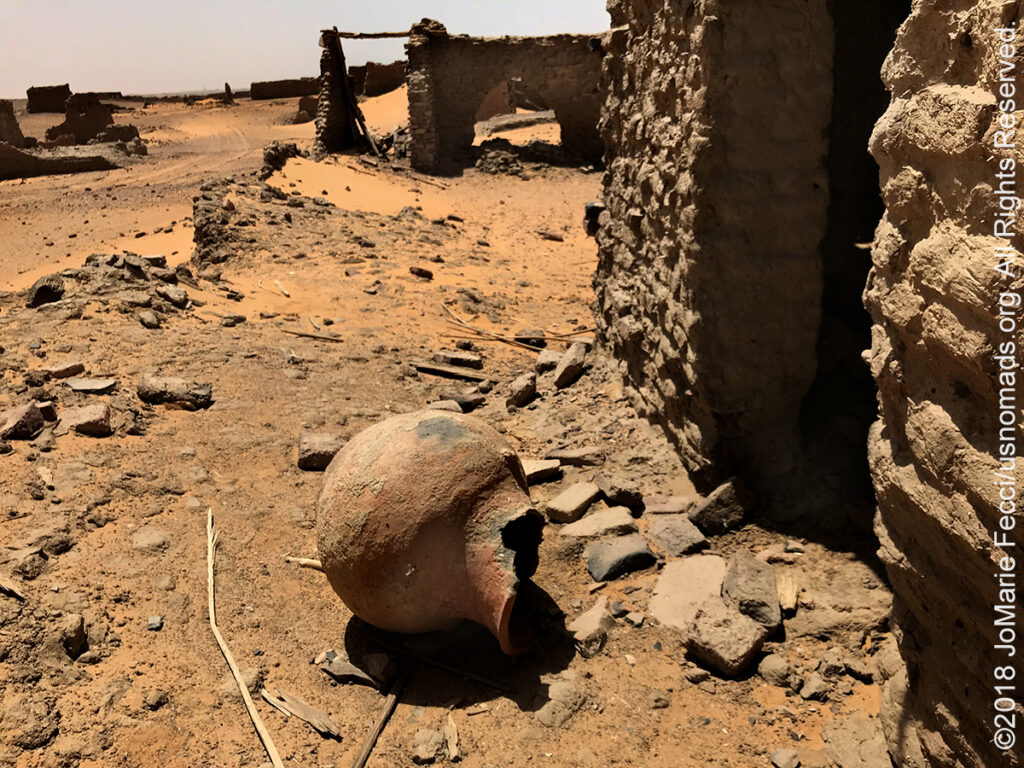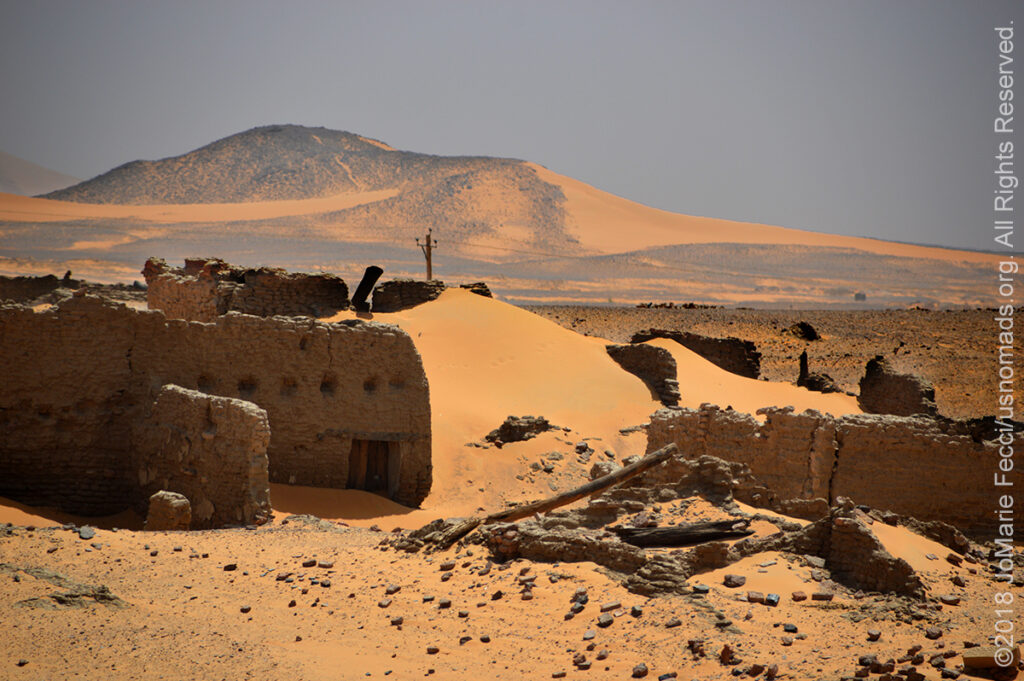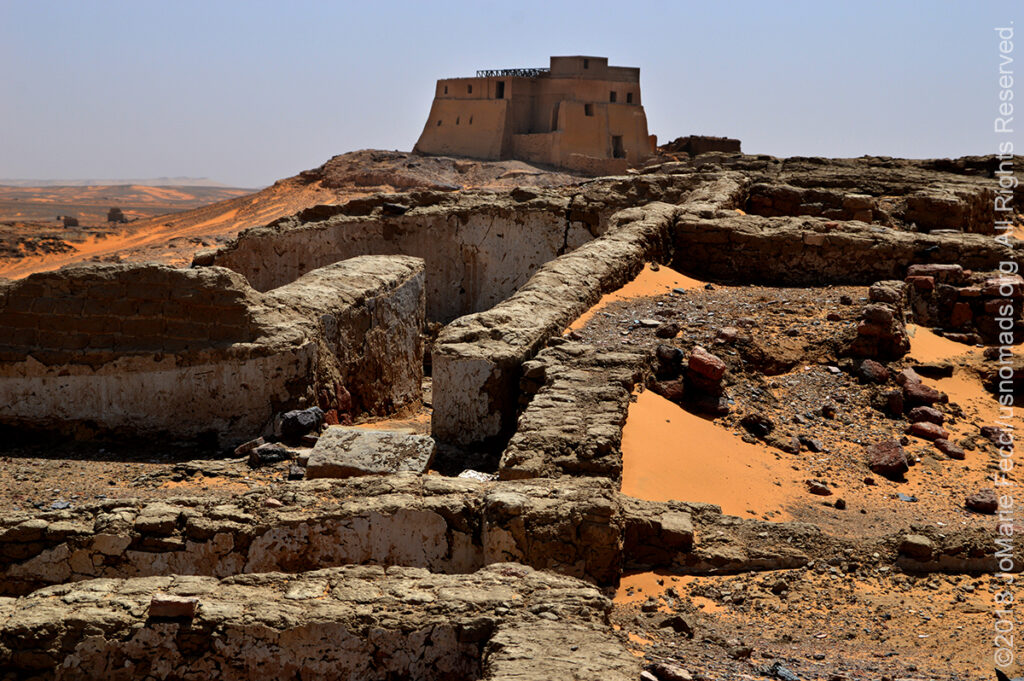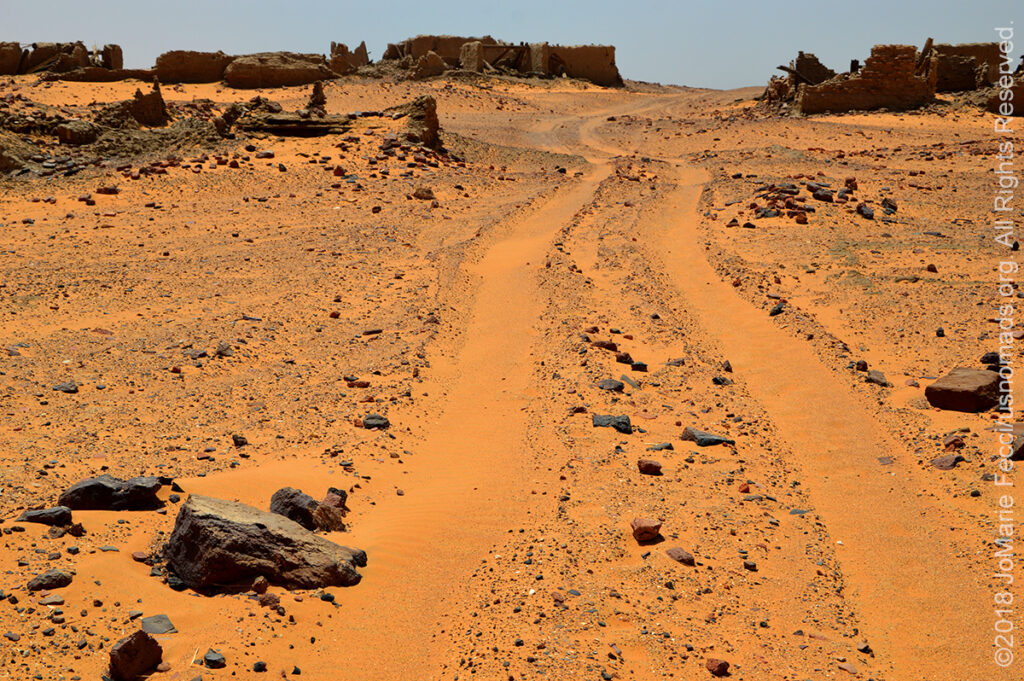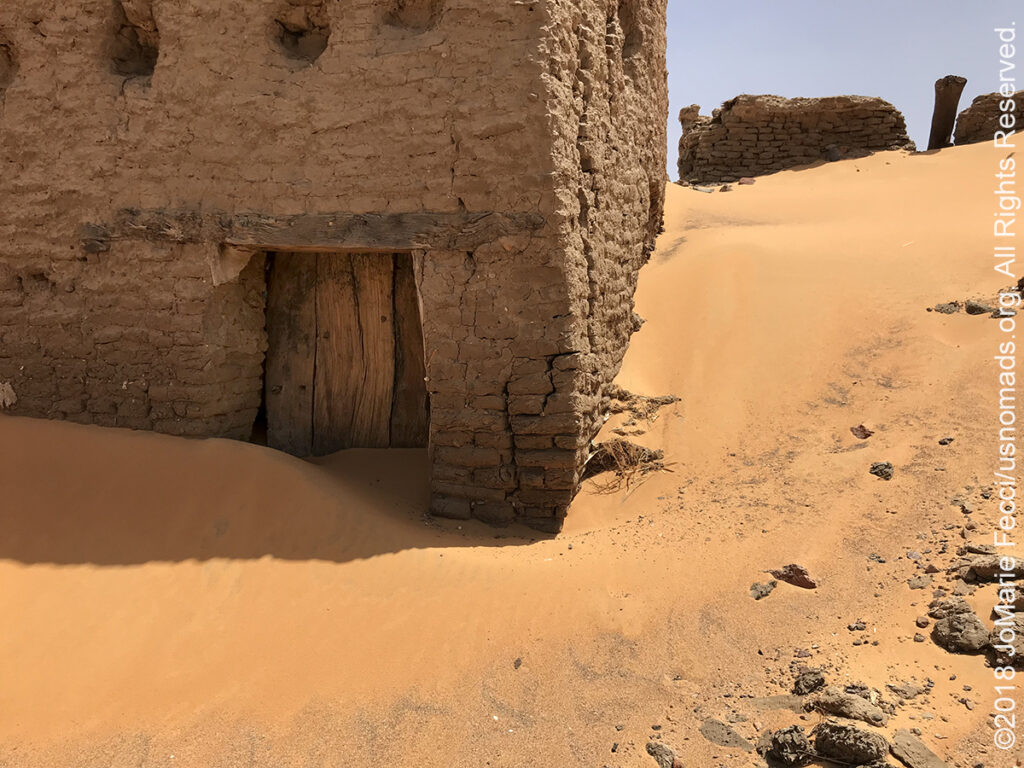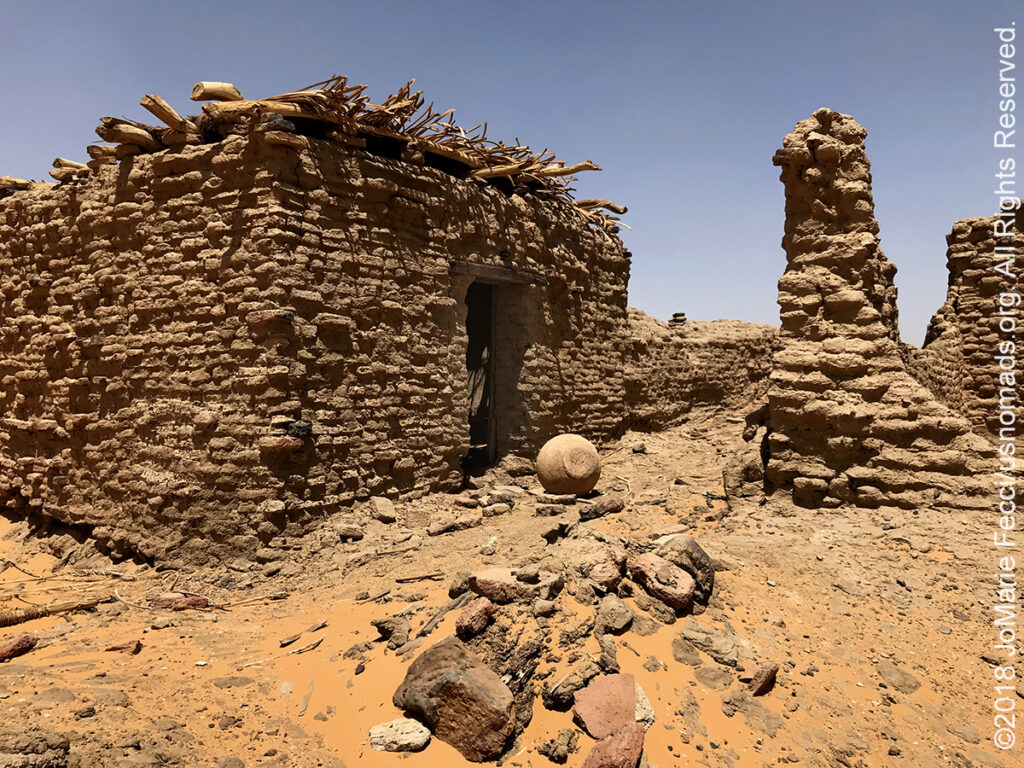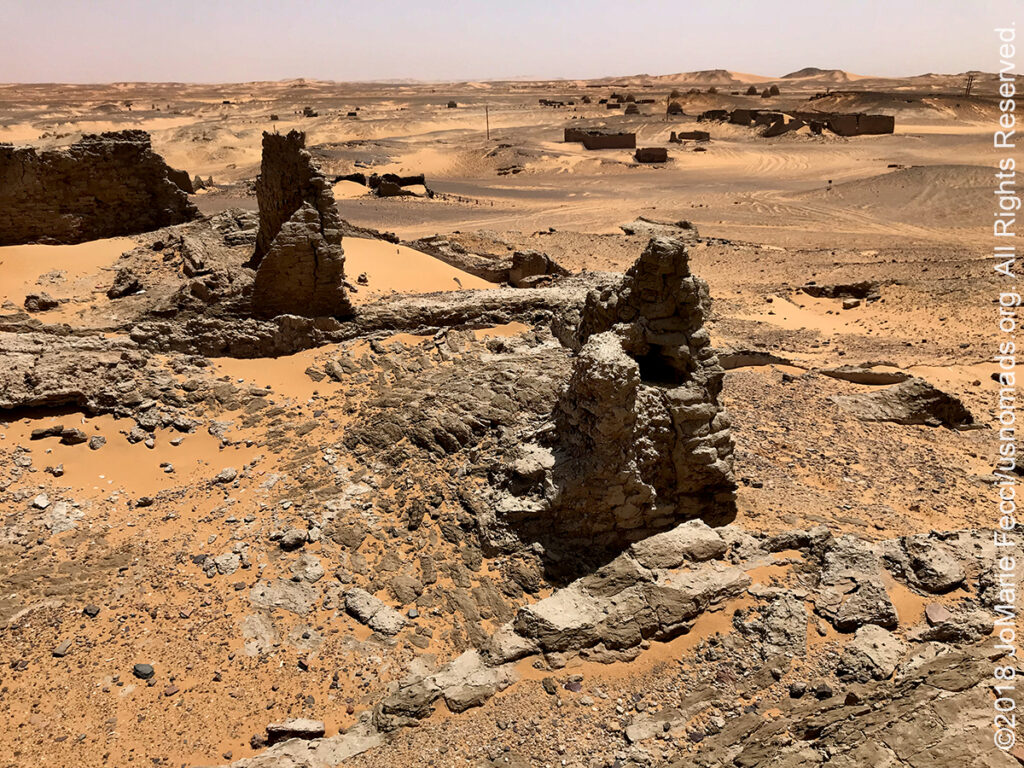The wind is blowing softy as I wander through the streets of a deserted town in the Sahara, and I can’t tell if the sand is covering or uncovering the ruined buildings, grain by grain. Some of the old houses still stand in tact, and others have just a few walls or foundations left. The sand piles up, blocking an ancient wooden door, sealing its secrets.
Once an important city in medieval Nubia, Old Dongola had served as the departure point for caravans headed west. Today it’s deserted ruins extend over more than two kilometres along the eastern bank of the Nile in Sudan. Dongola was abandoned at some point in the nineteenth century when the entire population moved its urban center 50 miles downstream on the opposite side of the river. The old town was left to the desert, to be buried under shifting sand dunes.
A random pot, discarded, sits outside a doorway, and the shadows hide other artifacts of daily life inside one of the homes. There is still a faint Jeep track running through what might have been a main street. The specter of life remains, though the town has been mostly empty for over a century now. I wonder to myself what made the residents just leave it all behind to rebuild a “new” Dongola across the way.
Founded in the fifth century as a fortress, Dongola’s citadel included a royal residence, numerous palaces and public buildings. The city’s heyday was in the ninth–eleventh centuries, but building activity lasted until the fourteenth century. Around that time, the city began to decline. It was attacked by Arab armies several times, and a surviving inscription recording a military expedition sent by the Sultan of Egypt bears the date of 1317. The Nubian royalty left Dongola in 1364. At that point, Dongola faded into historical obscurity with only the briefest hints of its continued existence coming from accounts of European missionaries visiting the region.
However, the Darb el-Arba’in camel caravan route, the famed “Forty Days Road,” still ran through Dongola during the 17th century. According to a French traveller, Charles-Jacques Poncet, who visited the city in 1699, “The houses are ill built, and the streets half deserted and filled with heaps of sand…the castle is in the very center of the town. It is large and spacious, but the fortifications are inconsiderable.”

